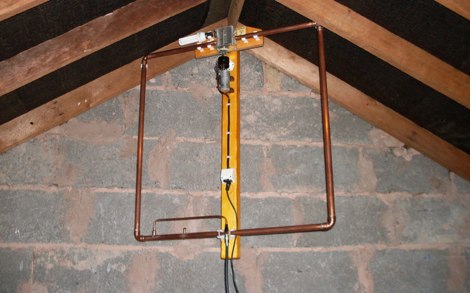On vhf a beam antenna can work well in the attic even a rotator can be used.
Ham antenna receiver attic.
Thanks david for the insulators first to comment below i ll send you.
A coaxial cable trap dipole antenna installed in the attic provides a surprisingly effective solution to hf operation on the 10 15 20 30 40 and 80 meter amateur bands at a qth with restrictive covenants that prohibit outside antennas.
The house will act as a natural shield and as long as your attic mounted antenna system is independent to the rest of your antennas lightning won t be an issue.
Need lots of room keep them away from metal objects like heaters and ducts wire antennas can be run near the peak of the roof inside the attic bent in odd shapes to match the space available.
Yes in the attic.
But even if you can t put up an outdoor antenna you can still operate with antennas installed in an accessible attic space.
Falling through the roof is a much more likely scenario.
A second advantage to mounting the antenna in the attic is that you will be protected from lightning strikes in the event of severe weather.
This is great for the amateur radio operator that is providing net control activities during a skywarn severe weather activation.
Again stay away from metal and wires to maintain your pattern.
Even if it is mostly used by ham radio operators to solve problems while transmitting the mfj 931 should also work for a receive only purpose.
Many hams including many of you reading this are limited by hoa or other outdoor antenna restrictions.
Using the cq antennas center insulators from ke5fen.
Viewer request to try out an antenna for ham radio in the attic.
It is theoretically possible to create a fire in the attic from your ham radio antenna but the conditions required for that to work require purpose and luck making this not a realistic concern for the typical attic farmer.
The mfj 931 could potentially be used a tuned counterpoise for your attic shortwave antenna.

